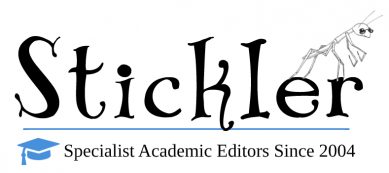Artificial intelligence (AI) is becoming increasingly prevalent in various aspects of our lives, including language-related tasks such as proofreading (and basic writing—we used it to create an outline for this post!). AI-driven proofreading tools do boast some impressive capabilities, from detecting basic grammatical errors to suggesting improvements in writing style. However, most journal publishers and schools are taking a hard line against the use of AI for writing and proofreading tasks related to academic output (e.g., journal manuscripts, theses and dissertations, and essays), and continuing to suggest that humans complete these tasks. There are a lot of good reasons for this.
First, human proofreaders possess a deep understanding of language that surpasses the capabilities of AI. Unlike machines, humans have the ability to interpret context, understand idiomatic expressions, and discern subtle nuances in tone and meaning. Language is inherently dynamic and nuanced, shaped by culture, context, and personal experience. Human proofreaders bring this nuanced understanding to their work, which enables them to make informed decisions about language usage, style, and tone that AI simply cannot replicate.
Moreover, human proofreaders offer a level of creativity and intuition that AI lacks. Language is not just a set of rules and patterns; it is a living, breathing entity that evolves over time. Human proofreaders have the ability to think creatively and adaptively, suggesting alternative phrasings, restructuring sentences for clarity, and ensuring appropriate tone. While AI may excel at identifying technical errors, it often falls short when it comes to capturing the artistry and subtlety of language.
Another key advantage of human proofreaders is their ability to empathize with the writer and understand their intentions. Effective communication goes beyond the mere transmission of information; it requires connection, and a genuine understanding of the audience. Human proofreaders take the time to consider the writer’s voice, audience, and objectives. They can offer valuable feedback and suggestions that resonate with the writer’s vision, helping to enhance the overall impact and effectiveness of the writing.
Furthermore, human proofreaders offer a level of judgment and discretion that AI lacks. Language is not always black and white; there are often shades of gray that require careful consideration and judgment. Human proofreaders can exercise discretion in their corrections, weighing factors such as style and context to make informed decisions about language usage. This ability to exercise judgment is particularly valuable in sensitive, unusual, or complex situations where rigid rules may not apply.
Finally, human proofreaders offer a personal touch that AI cannot replicate. Working with a human proofreader fosters a sense of collaboration and trust, allowing writers to engage in meaningful dialogue and exchange ideas. Humans can provide personalized feedback, answer questions, and offer guidance, creating a supportive environment for writers to grow and improve.
In conclusion, while AI-driven proofreading tools offer impressive capabilities, human proofreaders remain indispensable for their deep understanding of language, creativity, empathy, judgment, and personal touch. The art of language and nuance is a distinctly human domain, shaped by our unique capacity for interpretation, creativity, and empathy. As technology continues to advance, it is essential to recognize and celebrate the irreplaceable role that human proofreaders play in enhancing the clarity, effectiveness, and beauty of written communication.







